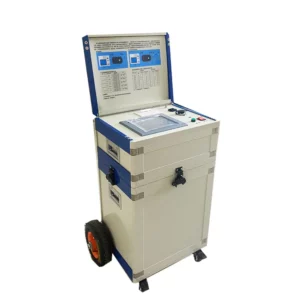Ensuring the accuracy of VLF (Very Low Frequency) hipot tester results is crucial for reliable testing of high voltage insulation systems.
Here are some best practices to follow:
- Calibration: Regularly calibrate the VLF hipot tester according to the manufacturer’s recommendations and industry standards. Calibration ensures that the tester is providing accurate voltage output and measurement readings.
- Verification Testing: Perform periodic verification testing using known standards or reference equipment to confirm the accuracy of the VLF hipot tester. This can include testing calibration check sources or certified test objects to validate the tester’s performance.
- Proper Setup: Follow the manufacturer’s instructions for setting up the VLF hipot tester and connecting it to the equipment under test (EUT). Ensure that all connections are secure and that the tester is configured correctly for the specific test parameters, including voltage level and test duration.
- Pre-Test Checks: Conduct pre-test checks to verify the condition of the test leads, grounding connections, and safety interlocks. Inspect the EUT for any visible signs of damage or contamination that could affect the test results.
- Temperature Compensation: Consider the ambient temperature during testing and apply temperature compensation if necessary. Changes in temperature can affect the dielectric properties of insulation materials, so it’s essential to account for temperature variations to ensure accurate results.
- Stabilization Time: Allow sufficient time for the VLF hipot tester and the EUT to stabilize before initiating the test. vlf hipot tester This ensures that the insulation system reaches thermal equilibrium and that any transient effects are minimized, leading to more consistent and accurate measurements.
- Corrective Actions: Monitor the test process closely and take corrective actions if any abnormalities or anomalies are observed. This includes addressing issues such as excessive leakage current, voltage breakdown, or unexpected behavior of the EUT.
- Post-Test Verification: After completing the test, verify the integrity of the insulation system using additional diagnostic tests, such as insulation resistance measurement or partial discharge analysis. This helps validate the results obtained from the VLF hipot test and provides a comprehensive assessment of the insulation condition.
- Documentation: Keep detailed records of the test setup, parameters, and results for each test conducted using the VLF hipot tester. Document any deviations from standard procedures, as well as any corrective actions taken during testing, to ensure traceability and accountability.
- Training and Certification: Ensure that personnel operating the VLF hipot tester are properly trained and certified to perform high voltage testing safely and effectively. Regular training and refresher courses can help maintain proficiency and awareness of best practices.
By following these best practices, you can help ensure the accuracy and reliability of VLF hipot tester results, leading to more effective testing and assessment of high voltage insulation systems.
